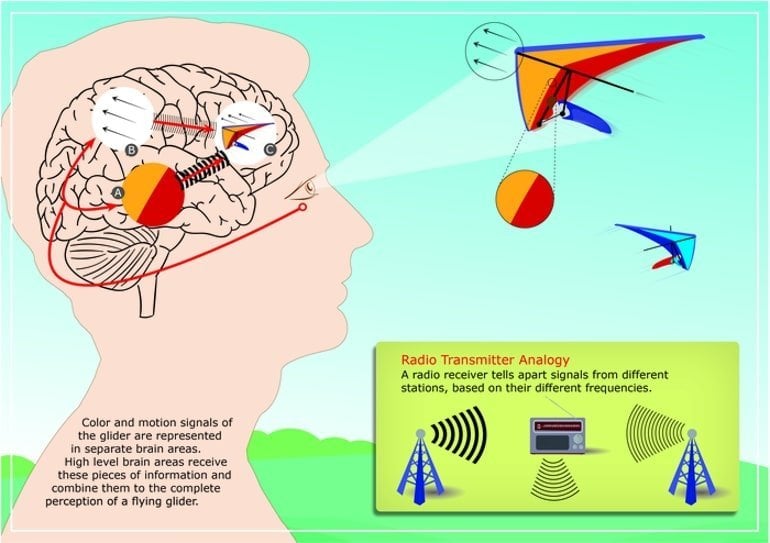Summary: Study reveals how rhythmic brain activity shapes our perception.
Source: DPZ
Contrary to our intuition, the precision with which we perceive the real world is not stable in time, rather it rhythmically fluctuates between high precision and low precision states several times per second. These fluctuations follow rhythmic electrical activities in the brain. Electrical rhythms of the brain range across different frequencies, from 1 to 250 hertz.
Using these different frequencies the brain regulates how relevant information is transmitted between different brain regions. A group of neuroscientists from the German Primate Centre, Goettingen, Germany and the University of Melbourne, Australia has critically reviewed the evidence on this subject and shows how these frequencies may determine fundamental perceptual processes in the brain.
Cross-frequency coupling enables selective attention
One basic phenomenon observed throughout brain areas is that slower rhythms (approx. 4 to 8 hertz) modulate the strength of a faster rhythm (approx. 40 to 80 hertz). This is known as cross-frequency coupling. The pair of frequencies coupled to each other varies, based upon the cortical area and its function for behavior.
In some instances, attention may cause nerve cells to become de-synchronized, allowing them to carry different informations, like when one string instrument plays a different melody from the rest of the orchestra. In others, attention may lead to the activation of large numbers of neurons to maximize their impact.
“These two different functions may be organized in the brain through cross frequency coupling,” says Moein Esghaei, one of the authors.
Distinguishing between different types of information
The simultaneous existence of different frequency bands in the brain also helps tagging different modalities of information arriving at the same brain region. For example colour and direction of a hang glider flying in the sky.

“Our brain routes information about color and motion through different frequencies to higher order brain areas, just like telecommunication systems transmitting different types of information to the same receiver,” says Moein Esghaei.
Understanding neurological diseases
“The rhythmic activity of neuronal networks plays a critical role for visual perception in humans and other primates,” summarizes Stefan Treue, head of the Cognitive Neuroscience Laboratory at the German Primate Center as a co-author.
“Understanding how exactly these activity patterns interact and are controlled, not only helps us to better understand the neural basis of perception, but also may help to elucidate some of the perceptual deficits in neurological conditions, such as dyslexia, ADHD, and schizophrenia.”
About this neuroscience research news
Author: Susanne Diederich
Source: DPZ
Contact: Susanne Diederich – DPZ
Image: The image is credited to German Primate Center
Original Research: Open access.
“Dynamic coupling of oscillatory neural activity and its roles in visual attention” by Moein Esghaei et al. Trends in Neuroscience
Abstract
Dynamic coupling of oscillatory neural activity and its roles in visual attention
- Rhythmic neuronal activity has long been proposed to have a central role in information processing in the mammalian brain. Recent studies have documented a multitude of simultaneously active frequency bands.
- These frequency components are often coupled, with the phase of a lower frequency modulating the power of a higher frequency rhythm [phase–amplitude coupling (PAC)]. We suggest that such coupling allows different scales of neural populations to interact and enables high-level cognitive functions, including selective attention.
- We propose a scheme that outlines how changes in PAC during attention helps in sensory signal discrimination in early visual areas and in signal transmission in higher areas.
- We suggest that dynamic coupling of distinct frequency bands provides a mechanism to functionally label and flexibly route signals from different sensory submodalities.






